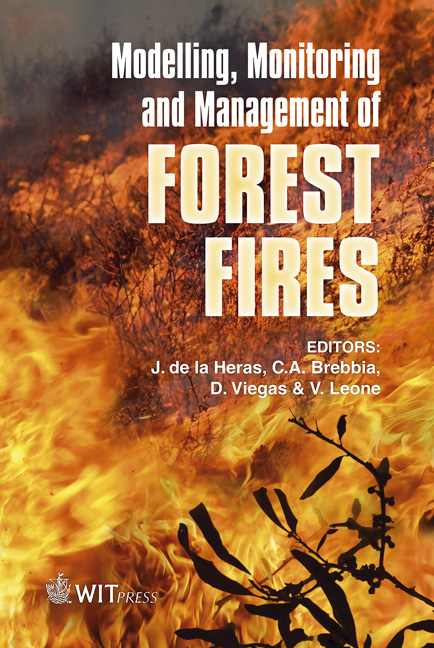Forest Fire Danger Forecasting In Poland
Price
Free (open access)
Transaction
Volume
119
Pages
7
Page Range
81 - 87
Published
2008
Size
474 kb
Paper DOI
10.2495/FIVA080091
Copyright
WIT Press
Author(s)
J. Piwnicki, B. Ubysz & R. Szczygieł
Abstract
This paper describes the method of forest fire danger assessment in Poland depending on dynamic weather changes. The degree of forest fire danger influences the type of organizational actions, which the forest administration and rescue units are obliged to take on a given day. Apart from that, an analysis of basic meteorological factors influencing the degree of forest fire danger in 2007 and occurrence of forest fires in the fire season was presented. Keywords: forest fire danger, fire season, litter humidity. 1 Introduction The purpose of forest fire danger forecasting is to establish the likelihood of fire on a given day and on the next day, depending on dynamic weather changes. The degree of forest fire danger influences the type of organizational actions, which the forest division or national park administration are obliged to take on a given day (Table 1). In Poland, degree of forest fire danger risk is established with the use of the IBL (Instytut Badań Leśnictwa, Forest Research Institute) method for administrative units of the Polish State Forests, in 34 forecast zones (since 2008: in 42 zones). Division of forest areas into zones is made by the General Directorate of the State Forests on request of the Independent Forest Fire Protection Laboratory of the Forest Research Institute. The following features are used as the criteria for the division: degrees of forest fire danger risk, presence of large, dense forest complexes, location in certain natural and forest areas, climatic homogeneity, habitat and forest stand conditions, frequency and size of forest fires, radio and telephone communications within the zone, administrative division of the State Forests as well as the presence of large urban agglomerations, industrial areas and high tourist traffic areas. The basic organizational unit is a forest division (average area: ca. 20,000 ha).
Keywords
forest fire danger, fire season, litter humidity.





